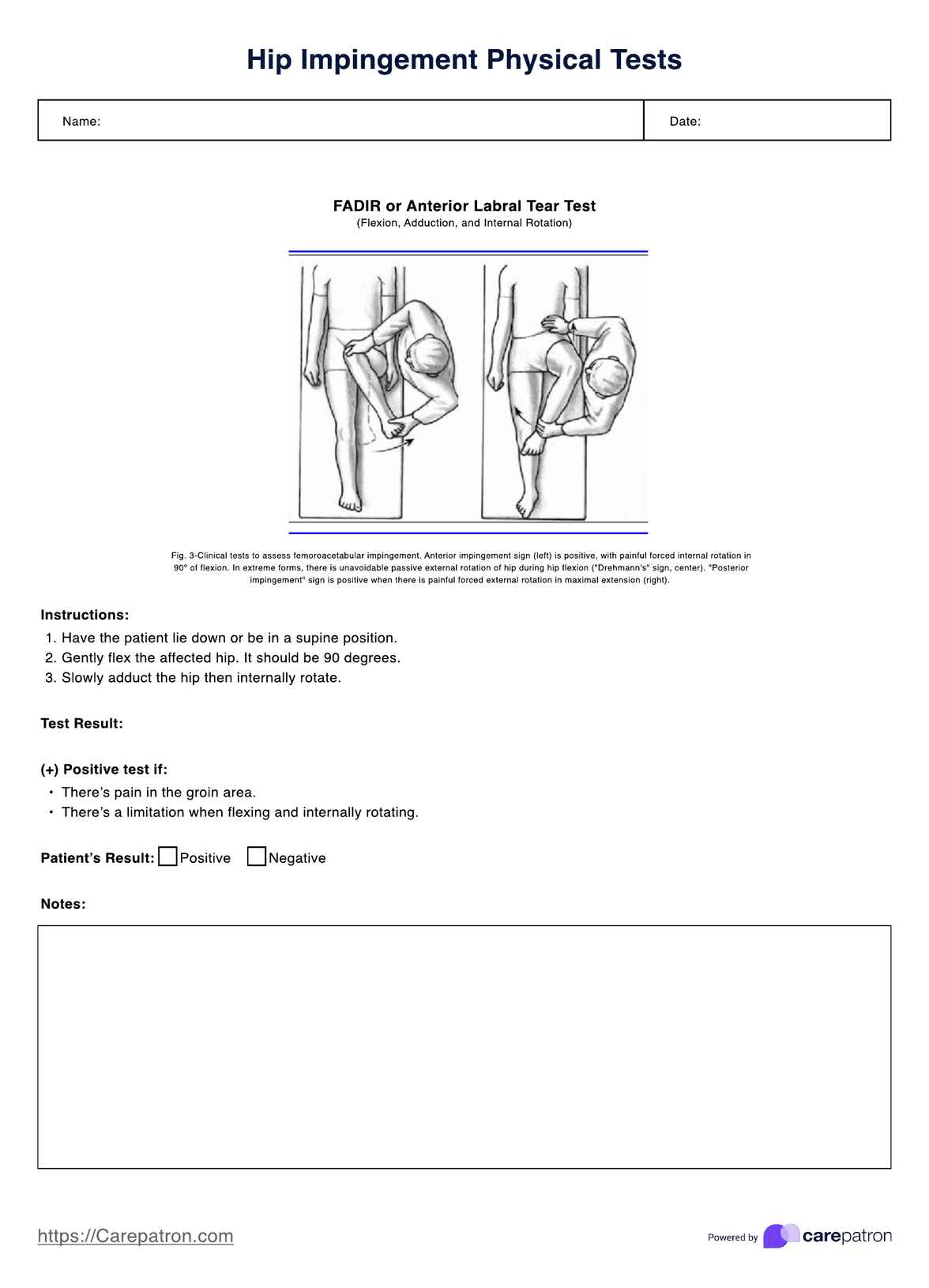It’s as easy as downloading the template, following the instructions on the template, and writing down your results on the same document. For a step-by-step guide on how to use our template, you may head to the “How does this Hip Impingement test work” section.

Hip Impingement Tests
Check if your patient has hip impingement by utilizing our template with physical tests. Click here for a copy and a guide on how to use it.
Hip Impingement Tests Template
Commonly asked questions
The benefit of our hip impingement test template is that you get instructions, a guide to aid you with interpretation, and a space to write down your results. For a comprehensive list of the benefits of the test and our template, please refer to the “Benefit of these Free Hip Impingement Test Templates” section.
Each of the tests included can help a practitioner check if the patient can flex, adduct, and internally/externally rotate their hip. All of these need to be checked before further testing or a diagnosis.
EHR and practice management software
Get started for free
*No credit card required
Free
$0/usd
Unlimited clients
Telehealth
1GB of storage
Client portal text
Automated billing and online payments











